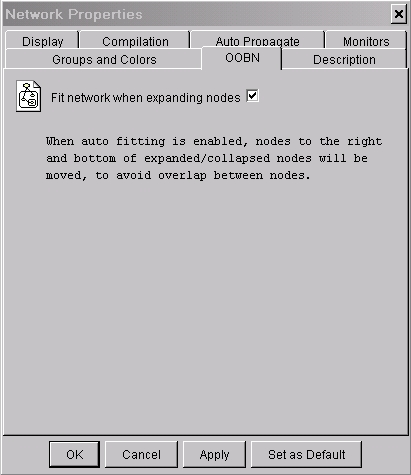 |
| Figure 1: The Network Properties dialog box showing the OOBN tab. |
An Object-Oriented Network is a network (i.e., Bayesian network or (limited-memory) influence diagram) that, in addition to the usual nodes, contains instance nodes. An instance node is a node representing an instance of another network. In other words, an instance node represents a subnet. Of course, the network of which instances exist in other networks can itself contain instance nodes, whereby an object-oriented network can be viewed as a hierarchical description (or model) of a problem domain. There are three main advantages of constructing a network using instance nodes:
An instance node connects to other nodes via some of the (basic) nodes in the copy of the network (the master) of which it is an instance. (Note that an instance node should be thought of as a copy of the network of which it is an instance.) These nodes are known as interface nodes. As we wish to support information hiding, the interface nodes only comprise a subset of the nodes in the master network. Interface nodes are subdivided into a set of input nodes and output nodes:
Instance nodes can be displayed in two different modes: Expanded (showing its interface nodes) and collapsed (having the same size as other nodes). To avoid problems with overlapping nodes and increased node distances when expanding and collapsing an instance node, respectively, the Hugin Graphical User Interface provides a rudimentary feature for moving nodes that would otherwise overlap with the instance node or be placed too far away from it when expanding or collapsing, respectively, the instance node. This feature can be enabled or disabled by clicking the check box of the OOBN tab of the Network Properties Pane (see Figure 1).
 |
| Figure 1: The Network Properties dialog box showing the OOBN tab. |
The tutorial on object-oriented networks shows how to construct an object-oriented network using the Hugin Graphical User Interface.